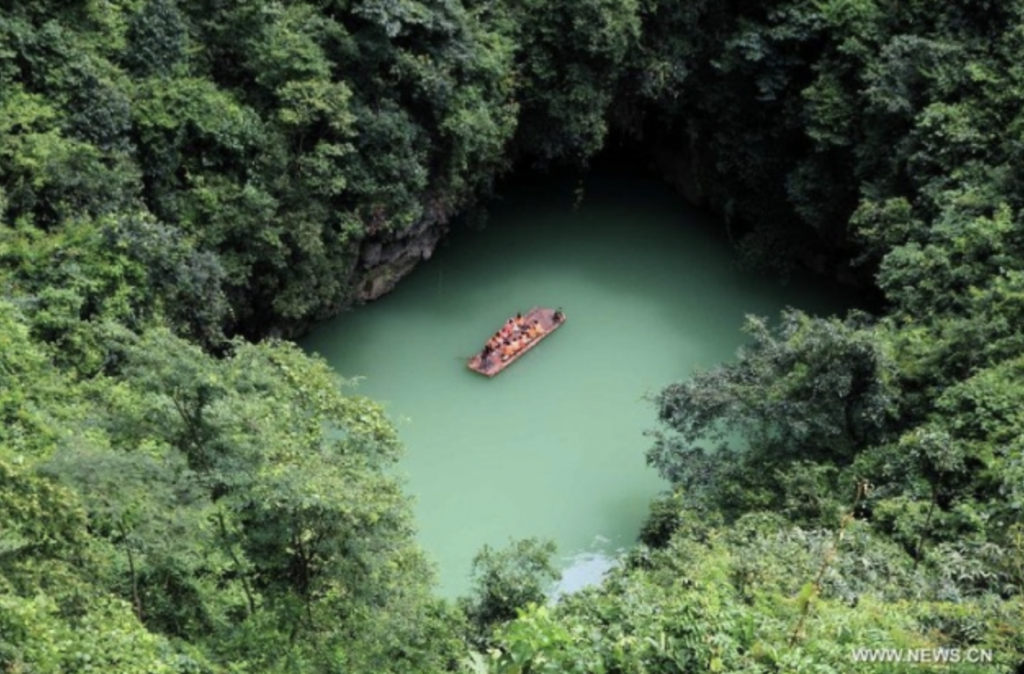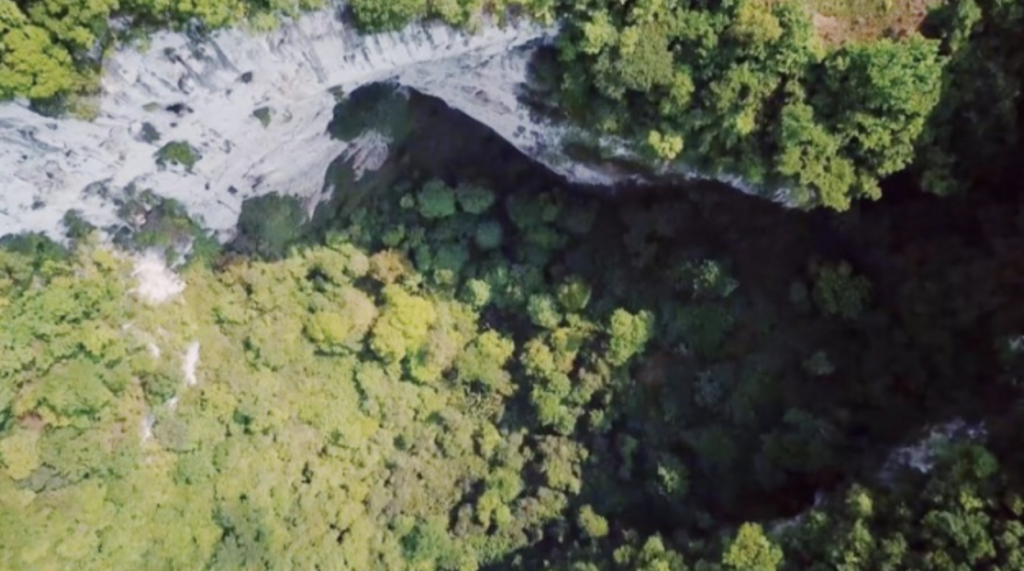
Hold on tight, because scientists have made an extraordinary discovery! Deep beneath China’s Leye-Fengshan Global Geopark lies an ancient forest hidden within a massive sinkhole. Located in the Guangxi Zhuang Autonomous Region, this region is known for its spectacular natural formations, including the world’s longest natural bridge and caves.

According to UNESCO, the geopark is predominantly made up of sedimentary rocks, with more than 60% being Devonian to Permian carbonate rocks that span a thickness of 3000 meters. Its unique geography, characterized by an “S”-shaped structure and a rhombus configuration in Leye and Fengshan counties respectively, has played a crucial role in the development of two subterranean rivers, the Bailang and Poyue. The interaction between these rivers has also given rise to the formation of the Buliuhe River. In this karst landscape, visitors can witness a multitude of geological wonders such as high karst peak clusters, poljes, karst springs, karst windows (tiankengs), natural bridges, extensive caves, massive cave chambers, and speleothems.

This UNESCO Global Geopark is not only a testament to the beauty of karst terrain but also provides valuable insights into the stages of tiankengs (giant sinkholes) and high fengcong karst (a type of karst landform). It boasts the world’s most exquisite karst windows, the highest density of tiankengs, the largest cave chambers, and even giant panda fossils. It truly showcases the remarkable wonders that nature has to offer.
Sinkholes are a prominent feature of karst landscapes, characterized by their formation due to the erosion of loose soil structures, both from the surface and from below. In May 2022, a new sinkhole was discovered in the park measuring an impressive 630 feet deep, 490 feet wide, and over 1,000 feet long. Inside this enormous chasm, scientists found an unexpected surprise – a thriving ancient forest filled with mature trees and plants, some of which may even be new species.
Chen Lixin, the leader of the expedition, speculated that the caves within the sinkhole could harbor undiscovered species, stating, “It wouldn’t surprise me if we find species in these caves that science hasn’t yet documented.” Among the vegetation found, some trees were towering at more than 130 feet in height.

To gain further insights into this remarkable find, George Veni, the director of the National Cave and Karst Research Institute, was consulted. He explained that the karst landscape, formed by the disintegration of bedrock, can vary greatly depending on factors such as location and temperature. While some karst areas may appear unassuming, with small sinkholes and narrow cave entrances, China’s karst landscape is renowned for its grandeur, with enormous sinkholes and expansive cave entrances. The region’s slightly acidic rainwater plays a crucial role in the erosion process, gradually creating subterranean spaces and eventual collapses.

This recent discovery adds to the thirty other known sinkhole openings in the region. Notably, China is home to Xiaozhai Tiankeng, the largest sinkhole in the world. The immense pit, measuring 2,100 feet deep, 2,000 feet long, and 1,760 feet wide, showcases a stream within its interior, resembling something out of the game Minecraft.

In conclusion, the hidden forest discovered 630 feet underground in China’s Leye-Fengshan Global Geopark is truly a wonder of nature. Its breathtaking karst landscape and unique geological features make it a must-visit destination for those seeking to marvel at the wonders that lie beneath the Earth’s surface.





